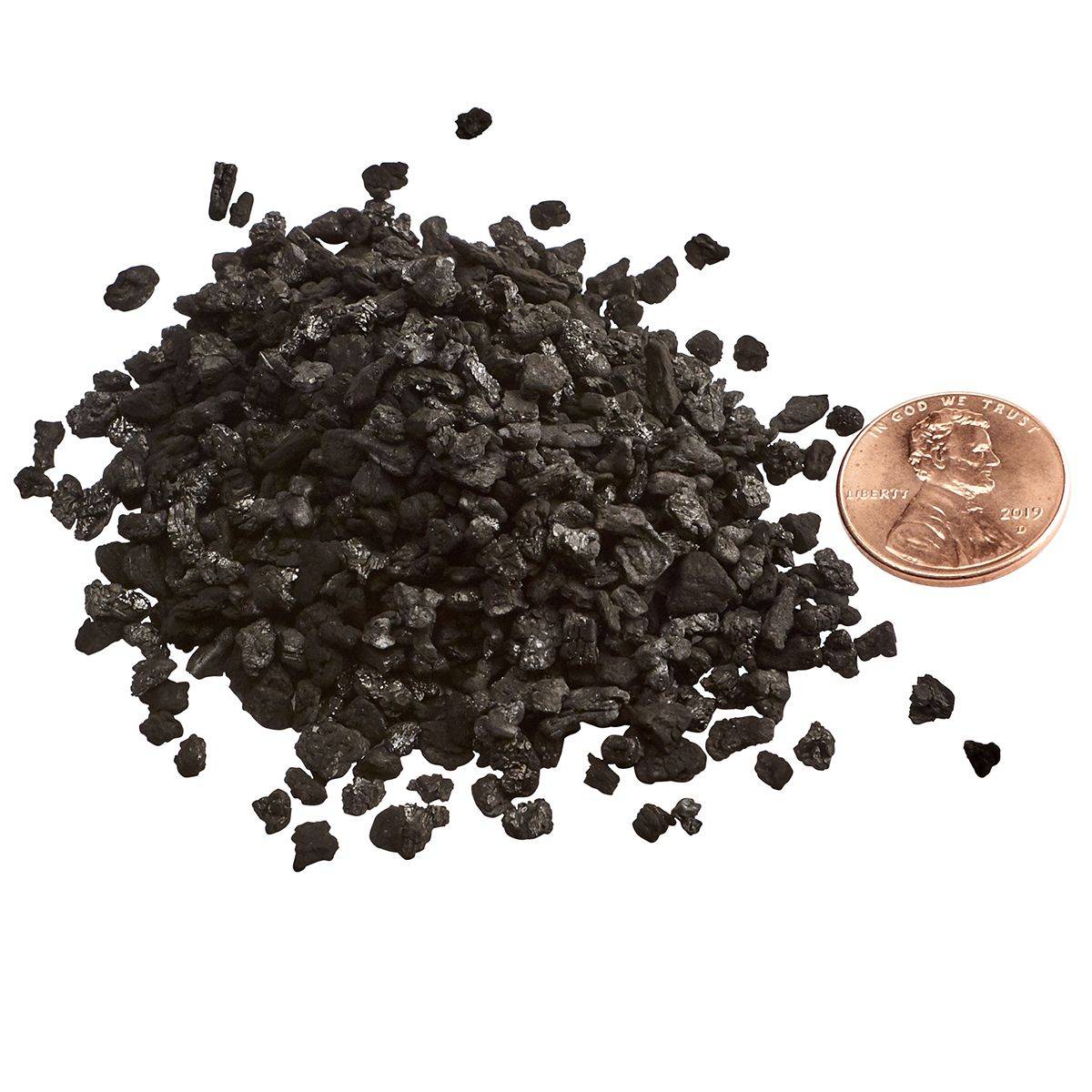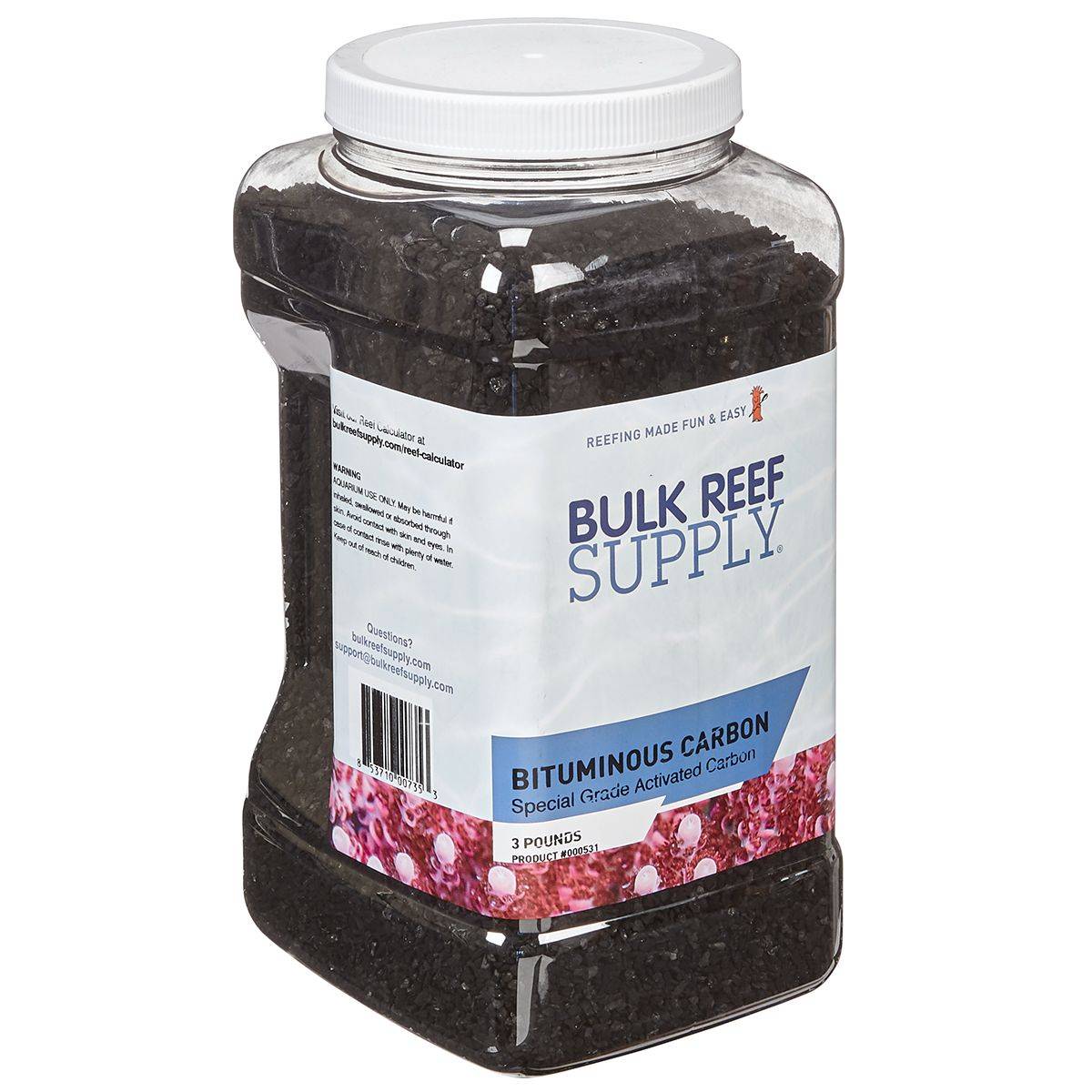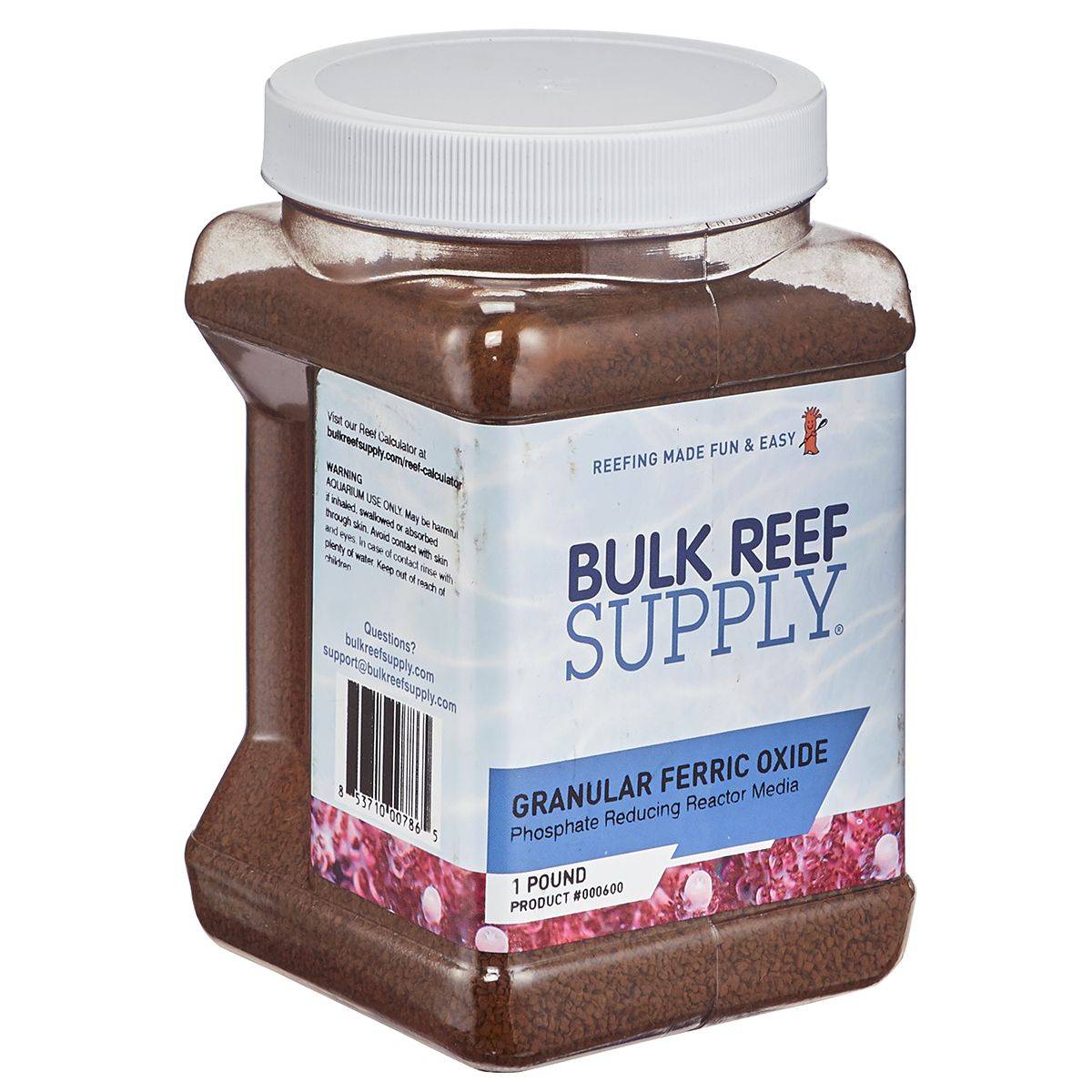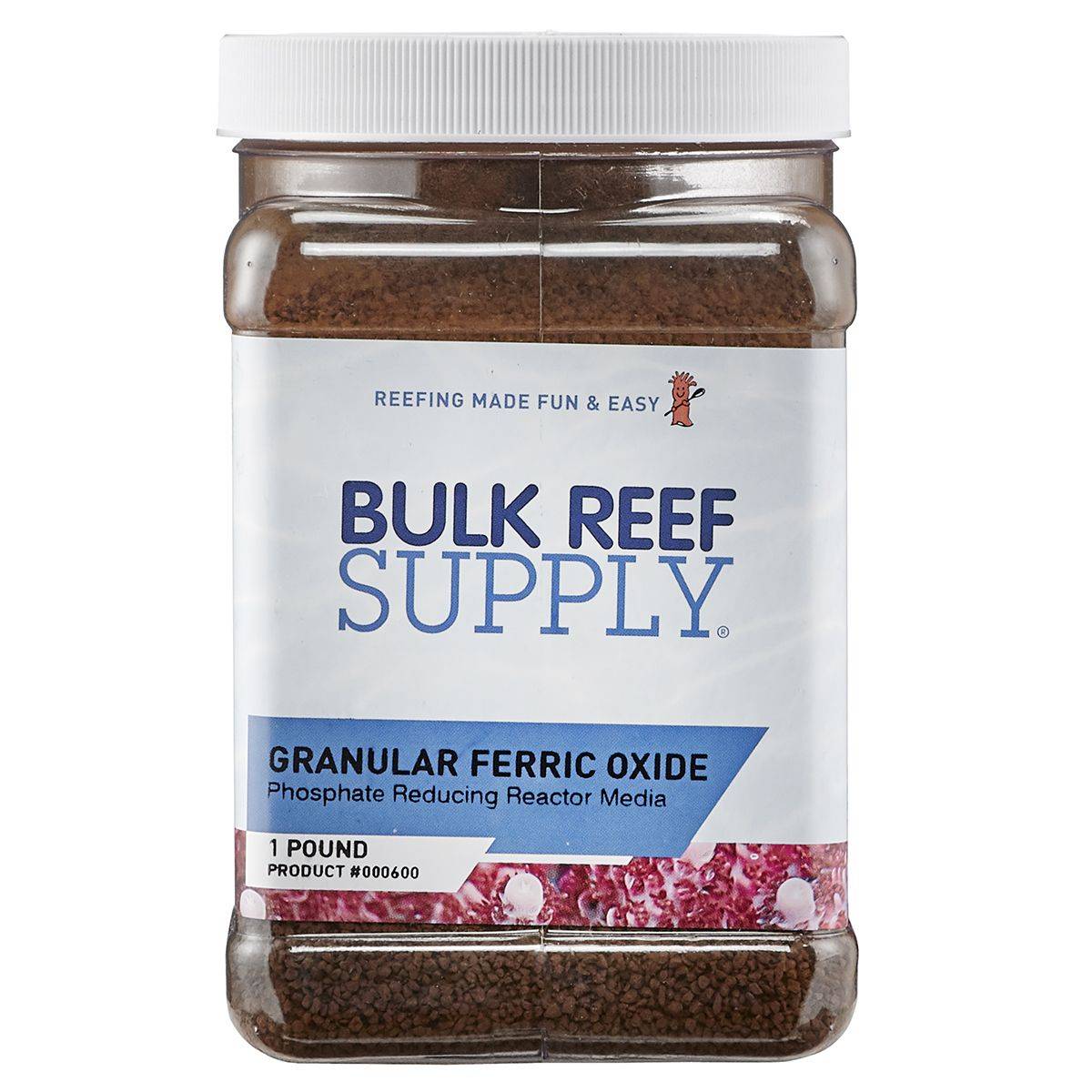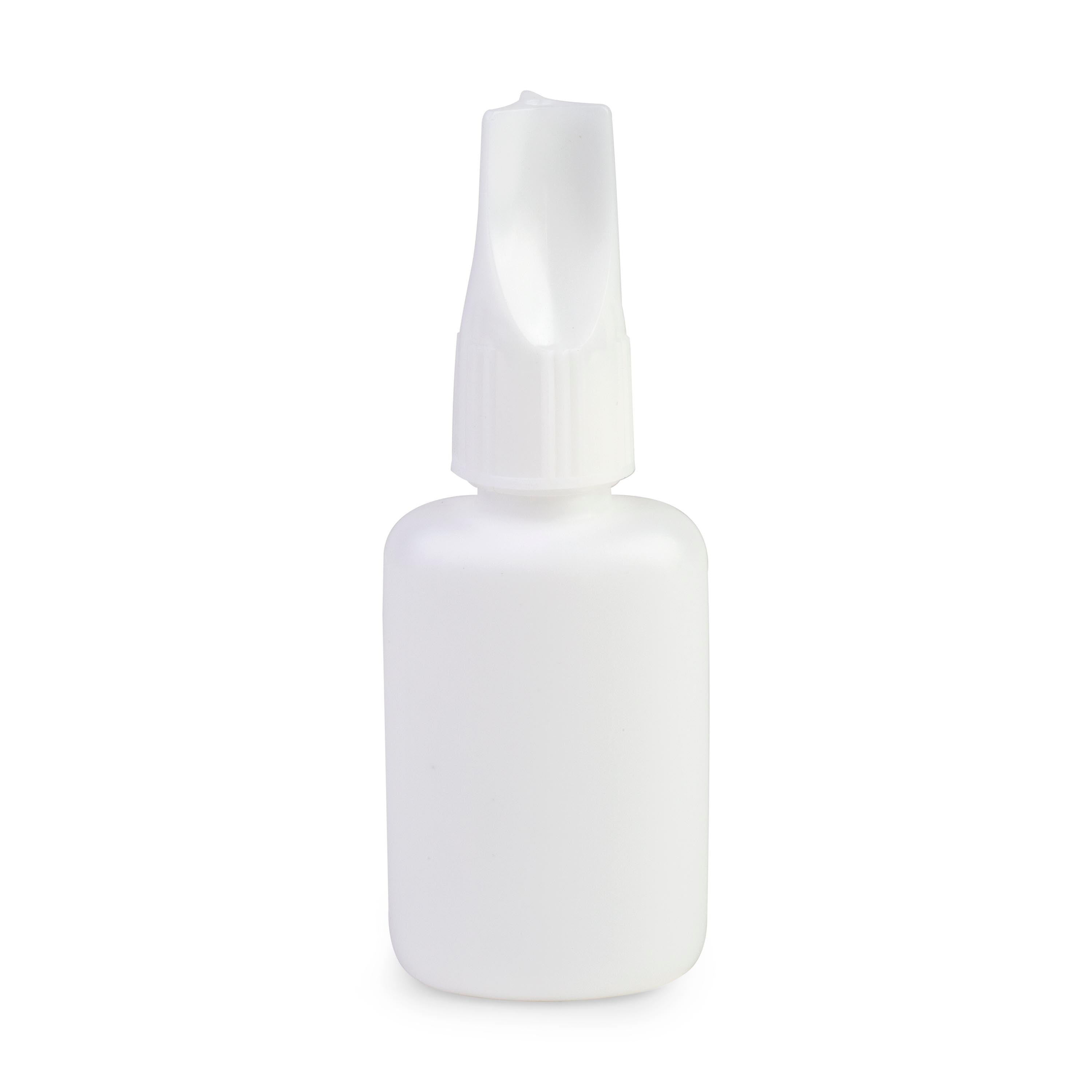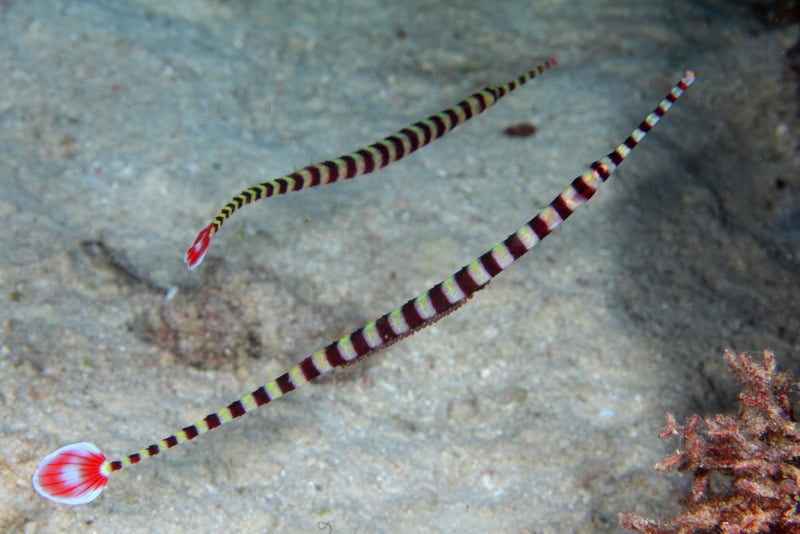
Banded Pipefish (Doryrhamphus dactylophorus)
Max Size: 7 inches
Diet: Carnivore
Temperament: Peaceful
Reef Compatible: With Caution. May be harmed by stinging corals and crabs.
Minimum Tank Size: 50 gallons
The Banded Pipefish belongs to the reef pipefish or flagtail pipefish family and exhibits stronger swimming abilities compared to its seahorse relatives, rarely making contact with the substrate. In its natural habitat, this fish can be observed swimming beneath rocky overhangs, near corals, or close to the floor of the reef.
With its distinctive features, the Banded Pipefish boasts a long, slender body, a tiny tubular mouth, and an oval, flag-like tail. Its body is creamy white with dark red to black vertical rings extending from the snout to the tail, while the tail itself is bright red with a white margin and central dot.
Due to its specific feeding requirements, we recommend that only experienced hobbyists consider keeping the Banded Pipefish. In a mature reef aquarium with ample live rock or macroalgae, this fish prefers a diet of live copepods. A suitable starting diet includes Live Copepods and vitamin-enriched live baby brine shrimp, but it is essential to avoid an overreliance on live baby brine shrimp. Over time, the Banded Pipefish can potentially adjust to consuming frozen CYCLOP-EEZE®, small Mysis, and Nutramar Ova.
During an intricate courtship dance, the female attaches her adhesive eggs to a flat area on the male's underside trunk. In a well-fed aquarium, a mated pair will regularly mate. It can be challenging to determine gender, but mature males typically display a flattened appearance due to the brood patch, while females have a more rounded appearance.
In captivity, the Banded Pipefish thrives best when kept in mated pairs or groups of its own kind in a tank that is at least 50 gallons in size. It can coexist with small, timid fish such as small gobies, seahorses, dragonets, and firefish. However, it is not compatible with aggressive, territorial, or fast-moving fish. Care should be taken to avoid housing it with anemones and corals with stinging tentacles or large corals that could consume them, such as brain corals. Additionally, the Banded Pipefish may be at risk from invertebrates such as crabs and large shrimp.


